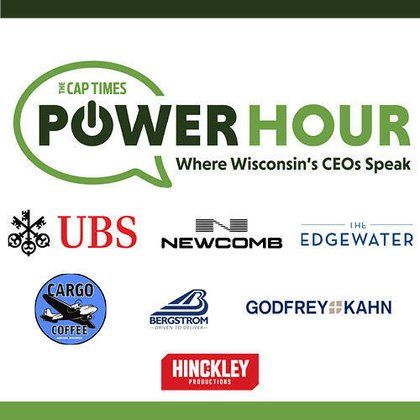By Tom Still
MILWAUKEE – A generation ago, then-Gov. Lee Dreyfus made a few waves when he suggested Wisconsin and other Great Lakes states should become “the blue-eyed Arabs of the Upper Midwest” by selling fresh water to the nation’s fast-growing Sunbelt.
Like many of his ideas, often delivered off-the-cuff to mask the fact he had actually thought about them, this Dreyfus proposal simultaneously stirred the imagination and set off alarms. Middle Eastern sheiks and Texas oil barons hold Wisconsin hostage over energy; why can’t Wisconsin leverage one of its most abundant resources as others go thirsty?
The debate led a few years later to the signing of the Great Lakes Charter, which made it all but impossible for one state to sell water without the approval of all. And the issue of water as an economic asset seeped back underground … until now.
At a forum held last week on Milwaukee’s symbolic Pier Wisconsin, abut 200 business, government and academic leaders from southeast Wisconsin revived a core principle of the Dreyfus idea: Let’s use the region’s abundant supply of water as an economic lure. This wasn’t a conference about selling water to others (except in 12-ounce bottles mixed with hops and malt) but attracting businesses and workers to a place where they need not worry about what happens when they turn on the faucet.
“Milwaukee can be an icon for how to take care of your water and the economic good that can come of that stewardship,” said Dr. William Hendee of the Medical College of Wisconsin, a conference organizer and a catalyst in the region’s efforts to set a new economic course. “But first, you have to believe it yourself.”
Believing starts with an understanding of the region’s water “legacy.” Southeast Wisconsin is home to a number of “wet” industries, including brewing, food products and manufacturing that revolves around devices that use or save water. Think Kohler or Badger Meter. And while some people prematurely proclaim the death of manufacturing, the industry still provides 567,000 jobs in Wisconsin – mostly in facilities or processing plants that use a lot of water. Tech-based firms, especially in the growing bio-based industries, also need plenty of water.
The region is also a center for water-based research, and has been so for years. The Milwaukee Waterworks and the Milwaukee Metropolitan Sewerage District are viewed as national leaders in safeguarding fresh water. Institutions such as Marquette University, UW-Milwaukee and MCW are pushing the envelope through projects such as the Great Lakes Research Institute. Not too far away, the UW-Madison has some of the leading fresh water research facilities in the Midwest.
Taken together, it’s not a stretch to imagine Wisconsin – and southeast Wisconsin, in particular – as a 21st century capital of water. As parts of the nation encounter shortages of fresh water, industries in those regions may look for water-rich places to relocate or expand. People may also be drawn to a lifestyle where water is not among their daily worries.
Southeast Wisconsin and the state as a whole can become known for research into water security. Whether it’s a bioterrorist attack or a natural water-borne disease, society must know how to cope if its supply of fresh water is threatened. A surprising amount of research in Wisconsin is already devoted to the topic of keeping our water safe, and knowing what works could become a bigger national priority.
The emergence of biofuels, biopower and bioproducts means Wisconsin may be using (and recycling) some familiar resources in new ways. The bioprocessing of crops, forest products and various types of waste requires water — or can be undertaken to save water. To cite one conservation example: Greater use of degradable biofuels could dramatically reduce ground and surface water contamination from spilled MTBE (methyl tertiary-butyl ether), which is used in gasoline.
Two natural resources may define the 21st century economy for the near term: energy and water. Wisconsin doesn’t produce much of the former – yet – but it is blessed with a ready supply of the latter. With the right strategies, Wisconsin can move from being a part of the Rust Belt to being a star of the Water Belt.
Still is president of the Wisconsin Technology Council. He is the former associate editor of the Wisconsin State Journal in Madison.
###





